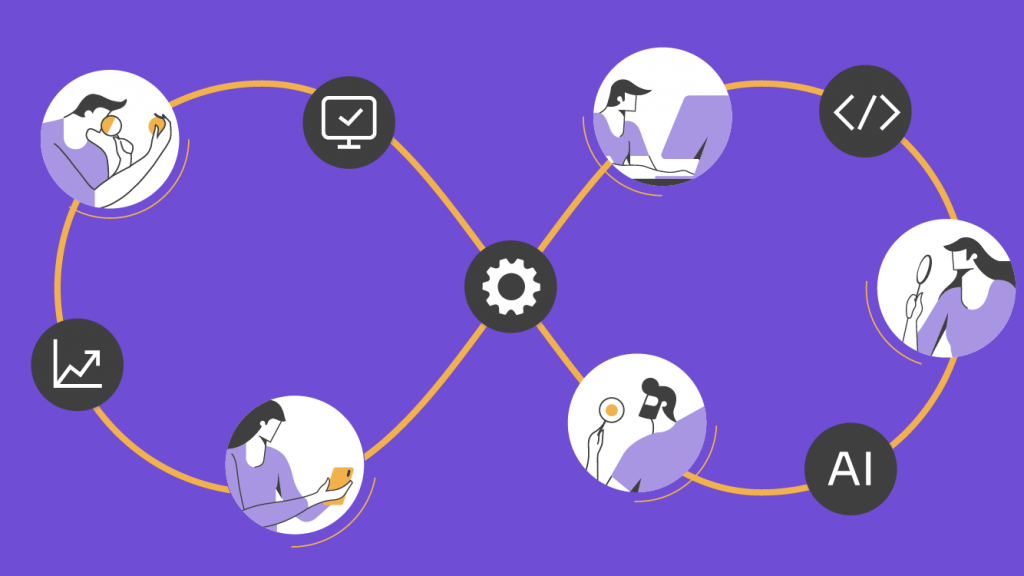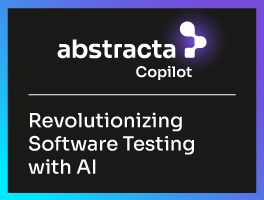Optimize black-box AI systems for healthcare, finance, and more. Learn testing strategies that enhance trust, traceability, and regulatory compliance.


Black box AI systems are revolutionizing industries, yet their lack of transparency poses challenges in understanding their decision-making. Let’s delve into their intricacies and explore solutions.
Transform your AI projects with Abstracta’s tailor-made testing solutions!
Inside Black Box AI
Black box AI refers to systems where the internal workings are not easily interpretable, preventing users from understanding how inputs influence outputs.
These systems rely heavily on black box AI model architectures, which utilize machine learning algorithms, deep neural networks, and extensive training data to identify patterns and make predictions.
Since ai arrived at scale, these models often mirror the structure of the human brain, using layered architectures to simulate how neurons process inputs—allowing them, in many cases, to outperform traditional systems in both speed and accuracy.
While they demonstrate remarkable capabilities, their opaque nature can pose significant challenges, for example, in areas like healthcare, criminal justice, and finance. In such cases, understanding the system’s logic is essential for meaningful human intervention and to prevent harm.
AI Black Box Problem: What Makes It So Complex?
These systems operate with opaque decision-making processes, often leaving users unable to trace how outcomes are derived. They depend on the model’s training data to process complex input-output relationships, but their inner workings are often inaccessible to users. This lack of transparency can lead to challenges in understanding, debugging, and optimizing models.
Moreover, when they are deployed in sensitive fields like patient care or credit scoring, the consequences of errors or biases become critical. In regions governed by regulations such as GDPR in Europe or HIPAA in the United States, organizations face added pressure to demonstrate that their models comply with accountability and transparency standards.
One area where this complexity becomes especially evident is healthcare, where black box AI models are increasingly used to support diagnostic processes and clinical decision-making. Black box systems used in healthcare often rely on deep learning algorithms composed of multiple layers that mimic the behavior of artificial neurons. This architecture enables the analysis of complex medical data, proving particularly effective in diagnosing diseases where traditional methods may fall short.
Example: In healthcare, a black box AI system might use computer vision powered by deep neural networks to analyze medical images and predict diagnoses. However, the specific reasoning behind each prediction remains unclear to the medical professionals using it.
All this raises many questions, but how does it fit into the broader landscape of AI systems?
What Are AI White Box Models?
Also referred to as auto-explainable systems, they are designed to provide full transparency in their decision-making processes. This interpretability enables developers, stakeholders, and users to understand how predictions are made, fostering trust and accountability. Transparency makes it possible to validate outputs and understand the reasoning behind them.
While these models may sometimes trade off performance for clarity, they are indispensable in regulated industries where transparency is non-negotiable.
Example: In cybersecurity, a white box AI model can analyze system logs to detect anomalies, such as unusual login patterns or unauthorized access attempts. By providing a transparent breakdown of how these threats are identified—such as correlating IP addresses, timestamps, and user activity—it allows organizations to understand the root cause of vulnerabilities.
How Do Black Box AI Systems Compare to Traditional Models?


When comparing black box AI systems to traditional models, the key distinction lies in their focus: black box AI emphasizes performance, while traditional models, such as white box, prioritize transparency and accountability.
This fundamental difference defines their strengths and trade-offs, particularly in use cases that demand high interpretability or performance. Let’s break this down!
Black Box AI Vs. White Box AI
| Aspect | Black Box AI | White Box (Auto-Explainable) AI |
|---|---|---|
| Focus | Performance and scalability. | Transparency and accountability. |
| Accuracy | High accuracy, especially in complex tasks involving machine learning models and deep learning systems. | Moderate to high, but sometimes trades performance for explainability. |
| Interpretability | Limited; decision-making processes are opaque. | High; provides clear insights into how decisions are made. |
| Bias Detection | Challenging due to lack of transparency. | Easier to identify and address biases through interpretable processes. |
| Applications | Ideal for tasks like large-scale data analysis. | Best suited for regulated industries like healthcare, finance, and criminal justice. |
| Ethical Compliance | Difficult to foster without additional tools or frameworks. | Supports compliance through clear decision-making logic and traceability. |
| Scalability | Excels in handling vast datasets and learning from complex patterns. | Can be resource-intensive when balancing transparency with scalability. |
| Stakeholder Trust | Lower trust due to lack of interpretability. | Higher trust, as stakeholders can understand and verify outcomes. |
| Ease of Debugging | Challenging; requires additional methods to interpret decision-making. | Straightforward; issues can be identified through clear logic and transparent workflows. |
How to Tackle Black Box AI Testing Challenges


Evaluating the reliability of black-box AI systems is a critical step in enabling consistent and trustworthy results. This process requires a specialized approach that combines robust evaluation methods with practical, tailored solutions to meet the unique needs of each project.
Below, we share how to tackle these artificial intelligence black box challenges:
- Assessing Reliability Through Data Validation and Bias Detection
To foster accurate and unbiased outcomes, it’s possible to implement data validation protocols that:
- Enhance accuracy: Carefully review and clean datasets to remove inconsistencies and inaccuracies.
- Address diversity: By including diverse datasets, minimize systemic biases, validate results, and create more equitable AI systems that perform well across varied use cases.
- Foster transparency: Collaboration with data scientists can help validate that data sources are well-documented, verifiable, and suitable for the intended applications.
- Enhancing Interpretability
We suggest employing advanced methods to interpret model behavior and foster trust among stakeholders. Some approaches include:
- Uncovering how the model reaches decisions: Apply techniques to break down complex outputs into simplified insights, analyzing prediction patterns and data relationships to help stakeholders better understand model behavior.
- Detecting anomalies: By closely examining outcomes, identify inconsistencies or irregularities that could signal deeper issues in the model, especially when these lead to dangerous decisions in high-stakes contexts like healthcare or finance.
- Improving stakeholder trust: Through clear and concise reporting, help organizations achieve a clear understanding of the reasoning behind model outputs, even for highly complex systems.
- Designing Robust Testing Frameworks
We encourage creating robust frameworks specifically for black box AI, designed to validate models thoroughly. Some approaches include:
- Stress testing: Evaluate how models perform under varying conditions, such as high data loads or extreme input scenarios. This helps identify limitations in performance and resilience.
- Security testing: Assess the model’s vulnerability to adversarial attacks or malicious inputs, such as prompt injections. These tests identify security flaws and are key to safeguarding AI behavior, especially in public-facing or critical applications.
- Scenario-based testing: By simulating real-world use cases, validate the reliability and accuracy of black box models in diverse contexts.
- Automated testing pipelines: Continuous testing is integrated into DevOps workflows, allowing organizations to efficiently monitor and refine their AI systems at scale.
- Collaborating Across Disciplines
At Abstracta, we always emphasize the importance of collaboration. By working closely with AI developers and data scientists, we can:
- Align testing strategies with the specific objectives of each AI model.
- Evaluate the ethical implications of model behavior and its potential impact as part of a commitment to responsible AI practices.
- Leverage the latest advancements in AI technology to refine our testing processes.
- Facilitating the Transition to Explainable AI
For organizations seeking to move from black-box AI to more transparent, explainable systems (known as glass-box AI systems), we suggest:
- Evaluating trade-offs: Balance the performance benefits of black box models with the transparency advantages offered by AI systems designed to be fully explainable.
- Integrating explainability tools: Incorporate AI tools into existing workflows to enhance transparency without disrupting operations.
- Creating accessible documentation: Help stakeholders at all levels understand and trust the AI system through clear and detailed documentation.
By combining rigorous evaluation methods with innovative testing strategies, organizations can navigate the complexities of black-box AI.
The Future of Black Box AI in Software Development


As black box AI continues to evolve, its applications in software development are expanding, especially in the context of automating AI-driven decisions.
Trends to Watch:
- Explainability tools: These tools are undergoing continuous improvements, enabling teams to better interpret and explain the inner workings of black box AI systems, including increasingly complex generative ai models.
- Industry standards: Global guidelines are being developed to address the ethical and technical challenges posed by black box AI, boosting consistency and fairness across industries.
- Integration with DevOps: Black box AI is becoming more seamlessly integrated into DevOps workflows, fostering more efficient and scalable deployment pipelines. This integration must go hand in hand with good security practices to reduce exposure to threat actors and help organizations protect intellectual property within their AI assets (data security).
Empower your testing strategy with Abstracta Copilot, our AI-powered assistant. Achieve 30% more productivity while reducing costs and boosting quality.
Wrapping Up
While black box AI excels in performance, its lack of transparency poses significant challenges to trust and accountability. By implementing robust data validation, enhancing interpretability, and fostering interdisciplinary collaboration, we can mitigate these issues.
In the context of software development, these models enable teams to automate complex tasks, enhance predictive capabilities, and deliver more reliable solutions. By addressing their limitations, we can harness their power responsibly to drive innovation across industries.
FAQs About Black Box AI


What Is Black Box AI?
Black box AI refers to systems where the decision-making processes are not easily interpretable. These models analyze data and produce outcomes without revealing the logic behind their predictions, making them complex yet highly effective in specific applications.
Despite their capabilities, these systems can still lead to bad decisions if the training data is biased or the outputs are applied without proper validation.
Is ChatGPT Black Box?
Yes, ChatGPT operates as a black box model. While it delivers accurate outputs, the underlying reasoning remains opaque, characteristic of black-box AI systems.
What Is the Problem of the Black Box?
The main challenge of black box AI lies in its lack of interpretability. This opacity can undermine trust and accountability, especially in sensitive areas like healthcare, where understanding the rationale behind decisions is critical.
How to Solve the Black Box Problem?
Addressing this issue involves employing explainability tools, applying ethical guidelines, and implementing thorough testing practices that aim to ensure ai systems operate ethically, accurately, and with traceability. Together, these measures help enhance transparency, mitigate risks, and build trust in black-box AI systems.
What Are Examples of Black Box AI in Real-World Applications?
A black box AI system in an autonomous vehicle might decide to brake or change lanes based on sensor input, without revealing the reasoning behind it. In healthcare, an AI model could suggest a diagnosis from a scan, but offer no explanation that doctors can verify. In finance, a credit scoring system might reject a loan application without making clear which data points influenced the decision.
How Do Black Box AI Systems Compare to Human Intelligence?
Now that AI has arrived in virtually every domain, it’s essential to reconsider how we compare machine capabilities to human intelligence. In a general sense, black box models mimic what’s often described as so-called intuition, but without the ability to explain their reasoning, which makes accountability a challenge.
How We Can Help You


With over 16 years of experience and a global presence, Abstracta is a leading technology solutions company with offices in the United States, Chile, Colombia, and Uruguay. We specialize in software development, AI-driven innovations & copilots, and end-to-end software testing services.
We believe that actively bonding ties propels us further. That’s why we’ve forged robust partnerships with industry leaders like Microsoft, Datadog, Tricentis, Perforce BlazeMeter, and Saucelabs, empowering us to incorporate cutting-edge technologies.
Our global client reviews on Clutch speak for themselves. Contact us to transform your AI projects!


Follow us on Linkedin & X to be part of our community!
Recommended for You
Requirements Traceability Matrix: Your QA Strategy
Tags In


Abstracta Team
Related Posts
LLMOps and Product Lifecycle Management: Comprehensive Guide to Optimizing LLMs
Discover how LLMOps and product lifecycle management transform LLMs. Follow our guide to implementing an efficient framework for LLM-based development.
Generative AI in Accounting: How to Harness Today’s Growth Potential
Discover how Generative AI in Accounting transforms efficiency and decision-making. See the benefits, challenges, and opportunities and how we can help you.
Search
Contents
Categories
- Acceptance testing
- Accessibility Testing
- AI
- API Testing
- Development
- DevOps
- Fintech
- Functional Software Testing
- Healthtech
- Mobile Testing
- Observability Testing
- Partners
- Performance Testing
- Press
- Quallity Engineering
- Security Testing
- Software Quality
- Software Testing
- Test Automation
- Testing Strategy
- Testing Tools
- Work Culture





